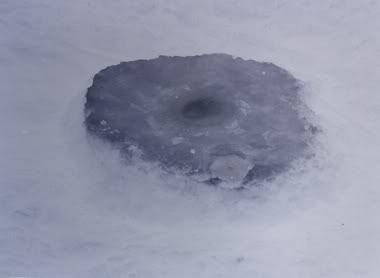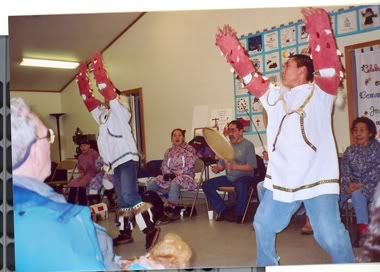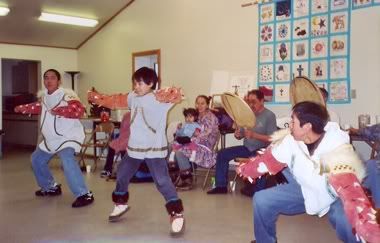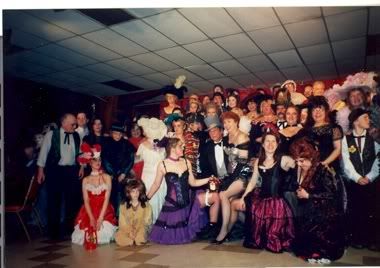
Written by Nancy Duresky
Wednesday, March 20, 2009 Pt. 2
The Iditarod celebrates many different aspects of Alaskan culture and history. It is known across the world as the premier sled-dog race anywhere. However, there are some aspects about the race that are uniquely Alaskan. For example, the expertise about sled dogs and the sled is founded in the Native Alaskan culture. When Joe Redington, considered the ‘Father of the Iditarod’, founded the race, it was dominated by Native Alaskans with colorful names like the Yukon Fox and the Shishmaref Cannonball. And many Native Alaskans like John Baker and Mike Williams still compete.
This race keeps alive the traditional mode of transportation used in Alaska until relatively recent history – crossing Alaska terrain using a dog team and hauling supplies to remote villages during the Alaskan Gold Rush. It is worth noting that the dogs used to haul supplies to the miners in the old days were bigger and more muscular than the Alaskan huskies used to race. Today’s dogs have slim bodies and sleek muscles and are not so much strong as fast.
This race also commemorates the Nome Serum Run of 1925. In 1925, diphtheria broke out in winter in Nome. There was not enough serum in Nome to inoculate the citizens, however, there was serum available in Anchorage. The entire town faced being wiped out. Air travel was not yet available and the port of Nome had frozen in for the winter. There was no way to get it to Nome. A plan was devised to move the serum by rail road to Nenana, near Fairbanks, and then carry it by dog sled into Nome. About 20 mushers and 150 dogs were involved. Teams and mushers were waiting on the 674 mile trail from Nenana to Nome. During the last stage of the run, the weather was at its worst, yet, Balto, the lead dog on the team, safely guided the team, the musher and the serum into Nome. The town was saved. A statue of Balto still stands in Central Park in New York City.
I also enjoy the Native American Dancing. I didn’t get to participate this year, but have in years past. And the week in Nome starts with the Miners and Musher’s ball. Residents dress up in Gold Rush costumes and gather in the Mini Convention Center for a great party. Many years ago, I saw people out on the sea ice fishing and I was amazed at how small the hole was. Walking on the sea ice gives me goose-flesh because I can hear it groan and creak all around me. Mostly, when I go, I am just one of the workers in the Dog lot with my trusty shovel. The last thing I do is go to the Iditarod Banquet, which will be my closing item here.
Stay tuned for more from Nancy!




